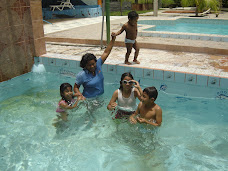This will be the last entry for a while as we are headed back to Alaska for a couple months. Not entirely by choice, but to replenish the coffers in order to spend most of late winter and spring back here, finishing the house and getting more established.
The last couple weeks have been primarily focused on getting the jeep in reliable running condition. This has required more patience than either of us would've expected, and just a bit more than we've had at times. The main issue, as succinctly put by Edwin the other night, after we returned from yet another mechanic with the requested work not actually done, is that there are relatively few professional mechanics here; what they all know how to do, however, is charge for their "services". So basically, any idiot with a wrench and a jack can hang out a shingle, lure in customers, take their money, and if the customer is lucky, the vehicle won't actually be in worse shape when returned. Because of this, we've tried to go on recommendations from people we trust, sticking to more reputable places, etc. But considering the results, I'm not sure it really mattered. Well, bit by bit things have eventually gotten repaired, and I don't think we've paid more than $100, parts & labor, anywhere—more often it's been closer to $25-$40—so there is a light at the end of the tunnel, if still not on the dashboard…
One day the latest set of men with wrenches called to tell us the jeep was ready, so we headed into town. At the shop, we discovered how relative a term "ready" can be, as most of the vital bits of the engine were still strewn about the pit. They assured us it really was 'almost' ready, so we pulled a couple of the ubiquitous plastic stacking chairs into the doorway facing the road and waited. I had my camera, and after watching the usual parade of forms of transportation pass by, decided to document the various options. In the picture section, you'll see: the cyclos. These are the three-wheel bikes with benches welded to the front that serve as cheap taxis for anywhere in and around Rivas. They are predominantly peddled by young men, although on occasion a gray head will appear. The rides cost anywhere from .42¢ to $1.80, depending on distance and number of passengers. You plop yourself onto the narrow padded bench, the driver secures the slim metal bar across your lap, much like an old amusement park ride, and you're off. I've only taken one once, with Reyna. At first I was sure we'd be launched into space every time he hit the brakes, or worse, a pothole, but somehow we arrived at our destination unscathed. Pat took one on his own last week, after we realized that by sitting on my cargo rack as I peddled us both home, he was not doing the bike any favors. We pulled over and he waved down a very skeptical looking older cyclo driver. After a brief negotiation {"How much to Buenos Aires?" (driver) "Too far." (driver's wife) "25 cords." (driver) "Really?" (wife) "Yes. OK, get in!"} Pat rode in self-conscious style the two miles home, and then gave the driver 40 (about $2), which I'm sure the wife never saw.
Then there are the horse drawn carts and carriages. The former for hauling stuff—anything from produce to building materials to live animals. The latter is limited to two-legged passengers, and is a cheaper alternative to a taxi, especially if there are more than three people. Allow yourself a bit more travel time, but this is more than compensated by that little "Al Gore would approve" glow resulting from not burning a single fossil fuel.
Mexico is not the only country south of the border to benefit from decommissioned US school busses. They are plentiful down here as well, often painted in bright colors and adorned with decals declaring the driver's association with Dios ("Blessed by God"; "God is my Driver"; "God is love", etc., although on one occasion I saw the same flowery metallic script weaving the word "Shrek" across a windshield…). The busses are often packed so tightly I wonder how anyone can actually get out at their stop, but they are reliable and cheap, especially for people commuting in from the countryside. These same open air busses run all the way to Managua and further, but I think that should we ever have the need to travel by bus, we'll splurge on one of the flashy modern air-conditioned alternatives…
Finally there are the bicycles themselves, on which it is not unusual to see an entire family of four—Papa peddling, Mama on the crossbar in front of him, the older child on the cargo rack, and the baby tightly held in Mama's free arm, bouncing on her thigh. I tried to get a picture of this, but was not successful. Same goes for the motorbikes, on which only the driver is required to wear a helmet. So you often see a man or woman zipping down the street, head well-protected, while the one, two, even three passengers cling to what they can as their hair whips in the wind unobstructed. Another favorite traffic law here concerns seatbelts: again, only the driver is required to wear one. You can have a dozen five year olds perched precariously on the roof of a pick up, or a dozen people standing in the truck bed, but if you pass a check point and the driver isn't buckled in, it's ticket time.
OK, enough about transportation. I think I wrote a while back about the cigars of Granada. Well Pat has become very fond of them, rationalizing his new habit by pointing out you don't inhale cigar smoke, rendering it less harmful to the body. No comment. But at least these fresh, organically grown, hand rolled models don't reek like most cheaper varieties found in the US. He has become a sort of ambassador of cigars (called "puros" here), always carrying a couple extra and handing them out whenever someone expresses interest or admiration. The fancy Granada ones ran out a while back, but he found a local alternative, grown, harvested, dried, and rolled by a handful of senior citizens who remember the old days and are now able to reap a modest profit from their skills. Very modest, as these rustic stogies run just over .5¢ a piece…they may not look like much (actually they look like very small brown boa constrictors who have just swallowed very small mice), but according to Pat, they are every bit as good as their elegant and symmetrical cousins from Granada.
Nov. 2nd was Dia de los Difuntos, or Day of the Dead. It’s not quite as big a deal as in Mexico, but from five in the morning the streets are crowded with flower vendors (many on bicycles), loudly touting their bright and beautiful wares. In the market itself, an entire section is given over to flowers, piles of purple, yellow, blue, red, spilling across the dusty pavers. I was waiting while I had some keys copied and observed the enthusiasm of both buyers and sellers. The whole scene was somehow reminiscent of the opening scene from “My Fair Lady”, minus the bulky clothing and the cockney accents. I biked past one of the larger cemeteries later and saw dozens of families cleaning and decorating the graves of their dead, many had radios playing lively music, and nearly everyone was dressed in vibrant colors. Children played between the plots, women chatted, and I am quite sure I spotted some men sipping from cans of beer. All in all, an inviting scene, and I was sorry I had no one to visit.
As for progress on the house, there's not been much. Edwin has just about completed all the electrical work, so at least that will be in place when we return. We are hoping to get our hands on some of that good tile then as well, assuming the factory reopens in January as scheduled, and by the time we return, it will be dry enough for us to dig the new well and get the septic system sorted. All of this should keep Pat busy, as I press ahead with my plans to open a small school. I have my eye on a building here in Buenos Aires, just need to find the dinero to make it mine and I'll be in business. I'm thinking of calling it "The English School". Not nearly as flashy as "The Abraham Lincoln Academy of English" or "The Freedom English School", already established by Nicas in Rivas, but hopefully, direct enough to draw in clients. I'll be sure and keep you posted as to my progress once we return.
Until then, thanks again for reading, stay tuned, and have a happy holiday season.
Friday, November 9, 2007
Subscribe to:
Comments (Atom)
Mechanics (or so they say)

Cyclo
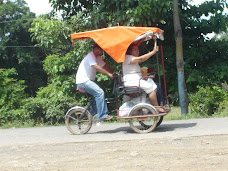
These guys really have to work sometimes.
Cyclo ready for the rain.

Kind of like Ben Hur, Nica style...

Cart with kids (usually used for hauling much more)
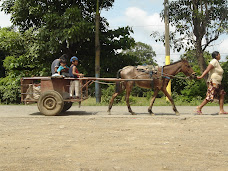
I think there are at least 10 people in there.
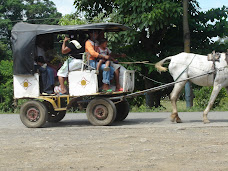
A better angle.
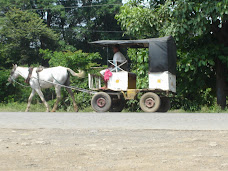
They never looked like this back home...

Delivery boy.
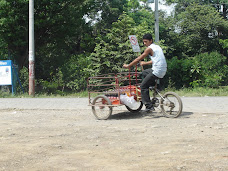
Pat and a local 'puro'.
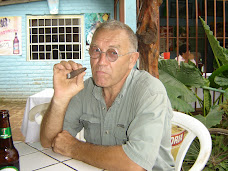
Doesn't he look like a character out of a Graham Greene novel?
The flower market

More flowers.
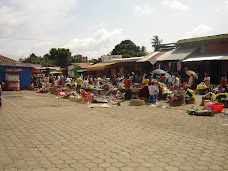
Sorting the platanos.
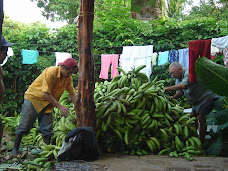
Highest quality are sold in Managua; the rest in Rivas.
Unloading fresh platanos at Edwin's.

This was the last from this crop. There'll be more in 15 days.
Me, Nicole and Jeysy, daughters of a couple new friends.
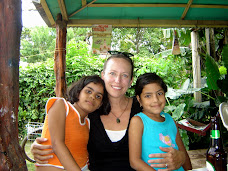
Our jeep and a neighbor's horse at the lake house.
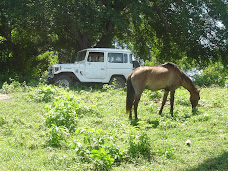
Buenos Aires Marching Band at China's birthday

Pat dancing--the bell of the ball at China's bash
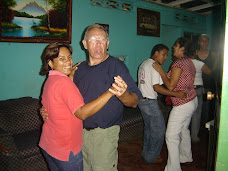
Possibly the world's cockiest rooster
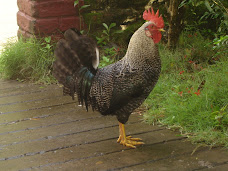
Pun intended...he's not too bright, but has a hell of a crow
Day of Oxtail soup that wasn't...
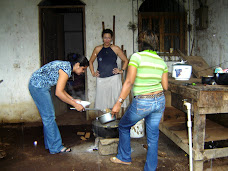
Our hosts overslept and missed the oxtail, so it was just beef.
Leaning pole of power
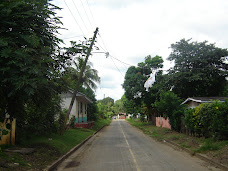
(I just learned another truck has torn it free...)
Our new Beastie

Land Cruiser's cute backside

Land Cruiser, me, Rosita, Milagro
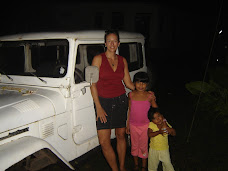
Pat and Milagro, enjoying the view atop the LC
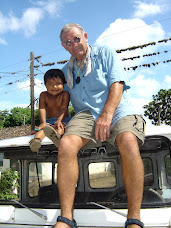
Chepita/Lulu

Pat and the luckiest dog in the world: Dogui

Diablos
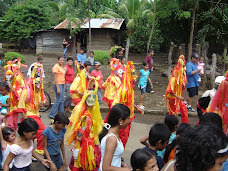
Note Jeysy's house in the background, where Einstein lives.
More Diablos

Guy in center in black is the leader.
And more Diablos

See odd Scary Movie dude up front...
The Man of the Hour: St. Francis

The guy in front is NOT a Gringo, but everyone affectionately calls him "Whitey"
A slice of life for Nica kids

Just a little guy

This one was in the rental, about half the size of the one in the beach house
Packing cigars ("puros"), Granada

Rolling cigars, Granada

Fresh painting, Granada

Lake at Granada

Field of butterflies, Ometepe

Water bus unloading, Cardenas

Happy pigs, waiting for the bus
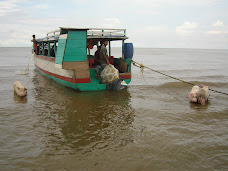
Loading pigs in Cardenas
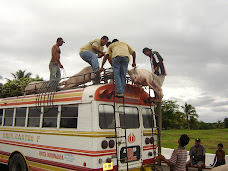
Pat and the Bull, Ometepe
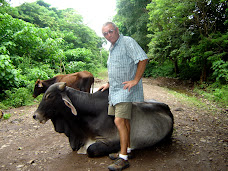
Amelia's house in Matagalpa
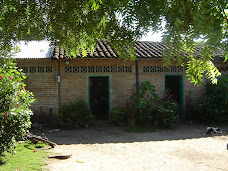
Rosita, Milagro, and 2 cousins, Matagalpa

The gang at the Matagalpa bar
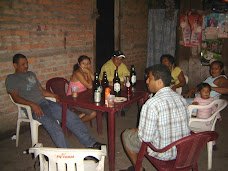
Local boys on ancient jukebox
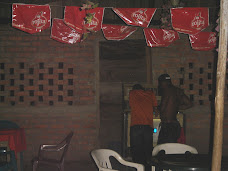
Chapel at Selva Negra
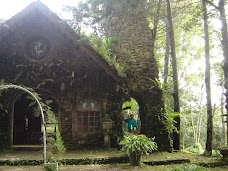
Wedding Chapel, rear, Selva Negra
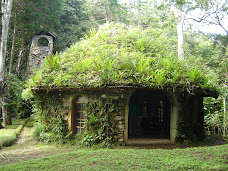
Wedding chapel inside, Selva Negra

Stone gazebo at Selva Negra

Our resident spider

Einstein with flower

Doña Juana, Jeysy, & Einstein

Grant & Linda at Laguna Apoyo

Pat milking Walter's cow

Reyna & kids at local pool
